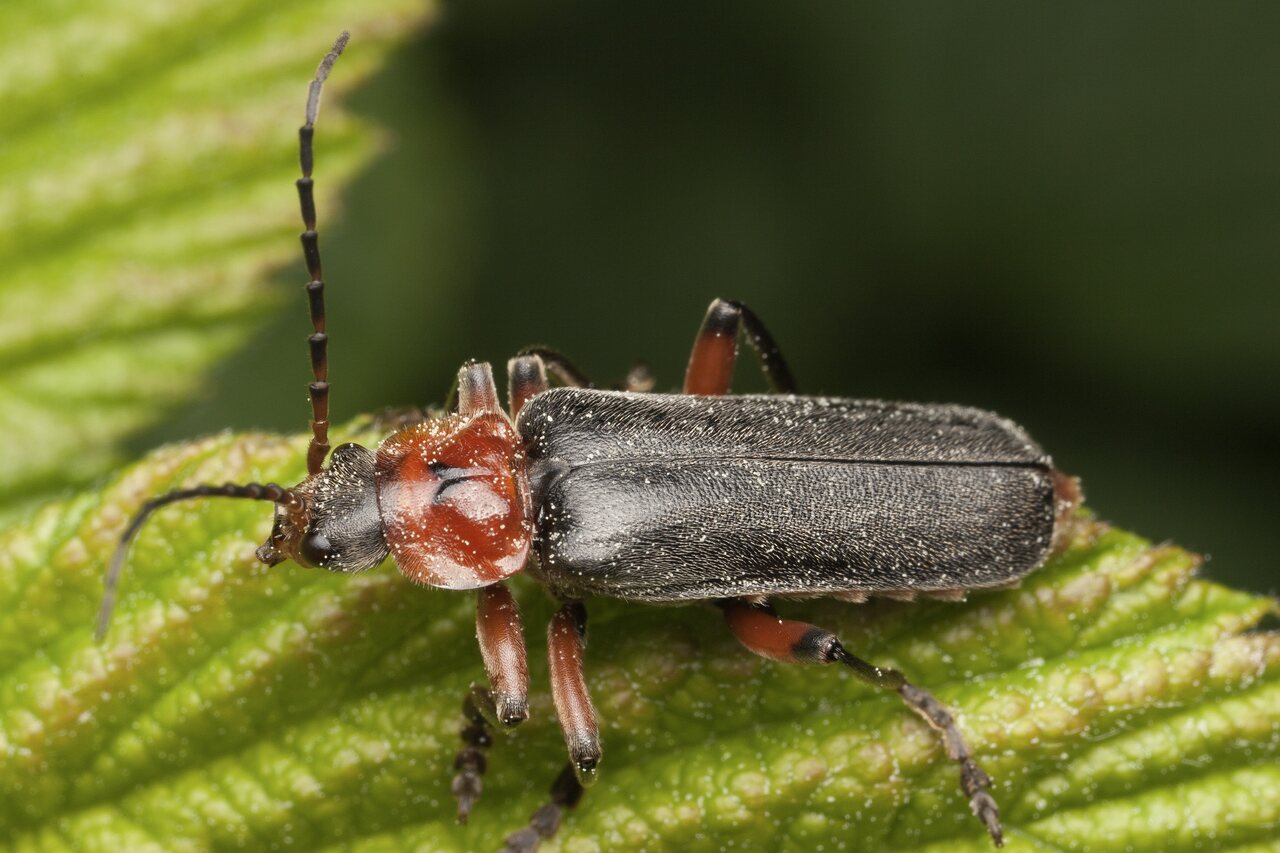
Cantharis rustica · raudonkojis minkštavabalis
- rustic sailor beetle
- Soldatenkäfer
- ketosylkikuoriainen
- raudonkojis minkštavabalis
- zwart soldaatje
- omomiłek wiejski
This large and very distinctive cantharid is common and widespread throughout Europe and east to Russia, occurring up to 200m. The typical habitat is open grassland, arable and wooded borders, parks and gardens etc. Adults appear from early to mid May and persist into early August; they are easily identified on flowers, especially apiacaea, where they hunt for other insects and, occasionally, feed on nectar and pollen. They fly well and are adventive, often occurring in situations far from their usual habitats. Mating proceeds through late May and early June, and eggs are laid into damp soil on arable borders etc. The eggs hatch after a week or so and the larvae pass through six instars before pupating in the soil the following May. Adults eclose within a week or two and can be seen emerging from the soil on hot days, often in numbers. The larvae are predatory feeding on snails, worms and larvae etc. which they immobilize with a poisonous bite. The appearance is characteristic of the family; flat with the segments obvious and darkened by dense velvety pubescence, and with robust mouthparts. They are cold tolerant and hunt through the winter; during cold spells they remain under logs or among litter or tussocks etc. but in mild weather they are active in the open, even crawling on the surface of snow in search of prey, a behaviour which has earned them the vernacular of ‘snow worms’.
This is one of larger cantharids; easily seen and identified in the field as long as careful attention is paid to the colouration. Size varies; 9-13mm. Base of head to the front margin of the eyes black. Antennae black with at least 2, and usually more, basal segments entirely orange. Head finely punctured, with the clypeus convex between the antennal insertions. Pronotum finely punctured and pubescent, red with a central, usually cordate, dark mark which does not reach to the margins. Lateral margins broadly explanate. The elytra are entirely black; not metallic but usually appearing silky due to the dense recumbent pubescence. The surface has faint longitudinal lines and is strongly cross-strigose. Scutellum dark, punctured and pubescent as the elytra. The legs are variable in colour but are at least in part red; the femoral bases pale in even the darkest specimens. Pro-tibiae black, at least the basal half. All tibiae with 2 small spines at the apex. The third and fourth tarsal segments are bilobed and the anterior claw of each pair has a strong basal tooth. The meso- and meta-tarsi are distinctly wider in the male and the antennae are longer when compared with the female.
‥
0 comments
Add a comment